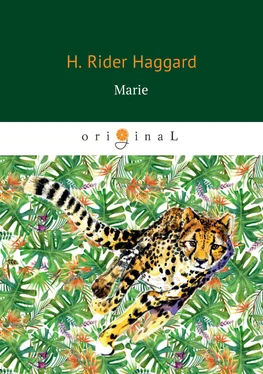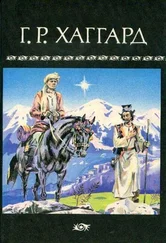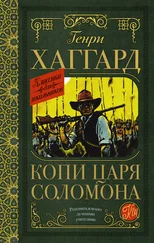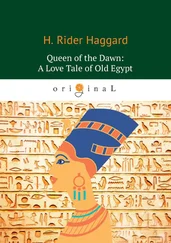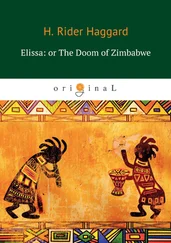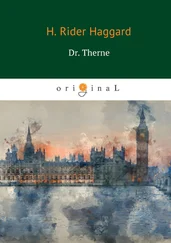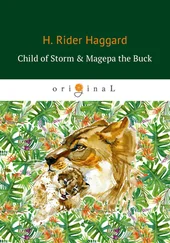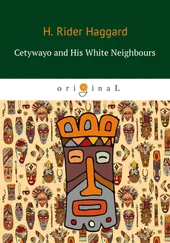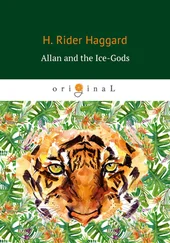But, to tell the truth, it was not of these matters of high policy, which were far enough away from a humble youth like myself, that I was thinking. What appealed to me and made my heart sick was the reflection that if Henri Marais and his friends trekked, Marie Marais must perforce trek with them; and that whereas I, an Englishman, could not be of that adventurous company, Hernando Pereira both could and would.
On the day following our arrival home, what between the fresh air, plenty of good food, for which I found I had an appetite, and liberal doses of Pontac —a generous Cape wine that is a kind of cross between port and Burgundy —I found myself so much better that I was able to hop about the place upon a pair of crutches which Hans improvised for me out of Kaffir sticks. Next morning, my improvement continuing at a rapid rate, I turned my attention seriously to the shooting match, for which I had but five days to prepare.
Now it chanced that some months before a young Englishman of good family —he was named the Honourable Vavasseur Smyth—who had accompanied an official relative to the Cape Colony, came our way in search of sport, of which I was able to show him a good deal of a humble kind. He had brought with him, amongst other weapons, what in those days was considered a very beautiful hair-triggered small-bore rifle fitted with a nipple for percussion caps, then quite a new invention. It was by a maker of the name of J. Purdey, of London, and had cost quite a large sum because of the perfection of its workmanship. When the Honourable V. Smyth—of whom I have never heard since—took his leave of us on his departure for England, being a generous-hearted young fellow, as a souvenir of himself, he kindly presented me with this rifle,* which I still have.
[*—This single-barrelled percussion-cap rifle described by Allan Quatermain, which figures so prominently in the history of this epoch of his life, has been sent to me by Mr. Curtis, and is before me as I write. It was made in the year 1835 by J. Purdey, of 314 1/2, Oxford Street, London, and is a beautiful piece of workmanship of its kind. Without the ramrod, which is now missing, it weighs only 5 lbs. 3 3/4 oz. The barrel is octagonal, and the rifled bore, designed to take a spherical bullet, is 1/2 in. in diameter. The hammer can be set to safety on the half-cock by means of a catch behind it.
Another peculiarity of the weapon, one that I have never seen before, is that by pressing on the back of the trigger the ordinary light pull of the piece is so reduced that the merest touch suffices to fire it, thus rendering it hair-triggered in the fullest sense of the word.
It has two flap-sights marked for 150 and 200 yards, in addition to the fixed sight designed for firing at 100 yards.
On the lock are engraved a stag and a doe, the first lying down and the second standing.
Of its sort and period, it is an extraordinarily well-made and handy gun, finished with horn at the end of what is now called the tongue, and with the stock cut away so as to leave a raised cushion against which the cheek of the shooter rests.
What charge it took I do not know, but I should imagine from 2 1/2 to 3 drachms of powder. It is easy to understand that in the hands of Allan Quatermain this weapon, obsolete as it is to-day, was capable of great things within the limits of its range, and that the faith he put in it at the trial of skill at the Groote Kloof, and afterwards in the fearful ordeal of the shooting of the vultures on the wing, upon the Mount of Slaughter, when the lives of many hung upon his marksmanship, was well justified. This, indeed, is shown by the results in both cases.
In writing of this rifle, Messrs. Purdey informed me that copper percussion caps were experimented with by Colonel Forsyth in 1820, and that their firm sold them in 1824, at a cost of £1 15s. per 1,000, although their use did not become general until some years later.—THE EDITOR.]
That was about six months earlier than the time of which I write, and during those months I had often used this rifle for the shooting of game, such as blesbuck and also of bustards. I found it to be a weapon of the most extraordinary accuracy up to a range of about two hundred yards, though when I rode off in that desperate hurry for Maraisfontein I did not take it with me because it was a single barrel and too small in the bore to load with loopers at a pinch. Still, in challenging Pereira, it was this gun and no other that I determined to use; indeed, had I not owned it I do not think that I should have ventured on the match.
As it happened, Mr. Smyth had left me with the rifle a large supply of specially cast bullets and of the new percussion caps, to say nothing of some very fine imported powder. Therefore, having ammunition in plenty, I set to work to practise. Seating myself upon a chair in a deep kloof near the station, across which rock pigeons and turtle doves were wont to fly in numbers at a considerable height, I began to fire at them as they flashed over me.
Now, in my age, I may say without fear of being set down a boaster, that I have one gift, that of marksmanship, which, I suppose, I owe to some curious combination of judgment, quickness of eye, and steadiness of hand. I can declare honestly that in my best days I never knew a man who could beat me in shooting at a living object; I say nothing of target work, of which I have little experience. Oddly enough, also, I believe that at this art, although then I lacked the practice which since has come to me in such plenty, I was as good as a youth as I have ever been in later days, and, of course, far better than I am now. This I soon proved upon the present occasion, for seated there in that kloof, after a few trials, I found that I could bring down quite a number of even the swift, straight-flying rock pigeons as they sped over me, and this, be it remembered, not with shot, but with a single bullet, a feat that many would hold to be incredible.
So the days passed, and I practised, every evening finding me a little better at this terribly difficult sport. For always I learned more as to the exact capacities of my rifle and the allowance that must be made according to the speed of the bird, its distance, and the complications of the wind and of the light. During those days, also, I recovered so rapidly that at the end of them I was almost in my normal condition, and could walk well with the aid of a single stick.
At length the eventful Thursday came, and about midday—for I lay in bed late that morning and did not shoot—I drove, or, rather, was driven, in a Cape cart with two horses to the place known as Groote Kloof or Great Gully. Over this gorge the wild geese flighted from their “pans” or feeding grounds on the high lands above, to other pans that lay some miles below, and thence, I suppose, straight out to the sea coast, whence they returned at dawn.
On arriving at the mouth of Groote Kloof about four o’clock in the afternoon, my father and I were astonished to see a great number of Boers assembled there, and among them a certain sprinkling of their younger womankind, who had come on horseback or in carts.
“Good gracious!” I said to my father; “if I had known there was to be such a fuss as this about a shooting match, I don’t think I could have faced it.”
“Hum,” he answered; “I think there is more in the wind than your match. Unless I am much mistaken, it has been made the excuse of a public meeting in a secluded spot, so as to throw the Authorities off the scent.”
As a matter of fact, my father was quite right. Before we arrived there that day the majority of those Boers, after full and long discussion, had arranged to shake the dust of the Colony off their feet, and find a home in new lands to the north.
Presently we were among them, and I noticed that, one and all, their faces were anxious and preoccupied. Pieter Retief caught sight of me being helped out of the cart by my father and Hans, whom I had brought to load, and for a moment looked puzzled. Evidently his thoughts were far away. Then he remembered and exclaimed in his jolly voice:
Читать дальше
